Nile crocodiles are among the most fascinating animals on the planet. With their massive size, powerful jaws, and cunning hunting abilities, they have long been the subject of fear and admiration.
Found throughout the Nile River and its surrounding areas, Nile crocodiles are the largest crocodilian species in Africa and are well known for their impressive predatory skills and complex social behaviour.
In this blog, we will delve into the world of Nile crocodiles and explore some of their most interesting features and behaviours. We will learn about their unique adaptations for hunting and survival, and how they play a crucial role in the ecosystems they inhabit. We will also discuss their fascinating social dynamics and the cultural significance of these animals in the regions where they are found.
So join us as we uncover the incredible world of Nile crocodiles. From their impressive physical abilities to their complex social lives, there is much to learn and appreciate about these amazing animals. We hope you enjoy reading about them as much as we enjoy sharing their story with you.
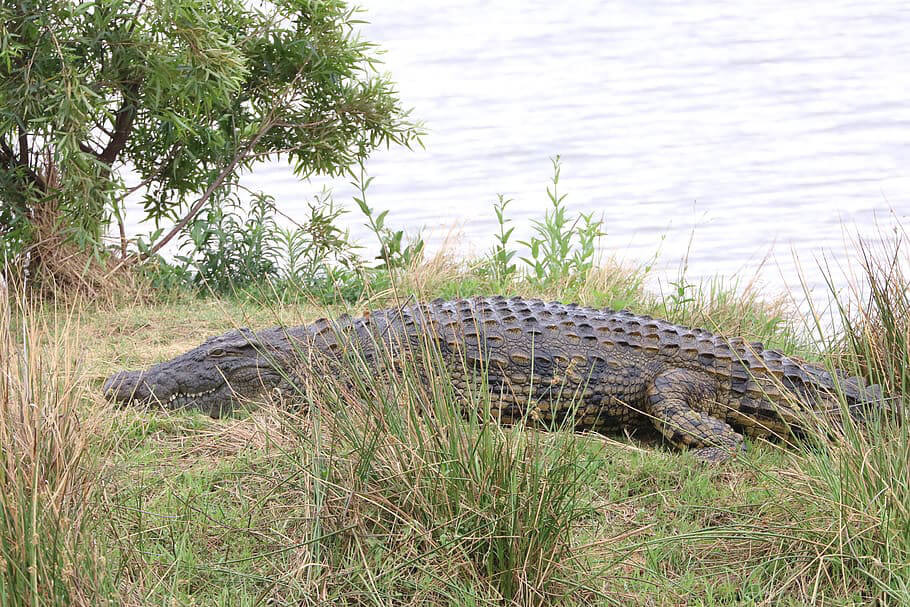
Interesting Facts About The Nile Crocodile
1. Why Are They Called Nile Crocodiles?
The scientific name of a Nile crocodile is Crocodylus niloticus, and the niloticus part of the name means "from the Nile river". Since the former habitat extended as far as Egypt, the Greeks could have first named the crocodile with that in mind.
Nile crocodiles don't only live in and around the Nile River, they live in other freshwater habitats. This is why the Nile Crocodile can also be called the common crocodile, black crocodile, or African crocodile.
2. Where Do Nile Crocodiles Live In The Wild?
Nile crocodiles live in freshwater habitats in much of Subsaharan Africa. Crocodiles are widely distributed throughout Eastern, Central, Western and Southern Africa and can be found in 26 countries.
If you go to any of these countries, you should be able to see crocodiles in the wild.
|
|
|
|
|
|
|
|
|
|
|
|
|
|
|
|
|
|
|
|
|
|
|
Crocodiles live in various water environments such as lakes, rivers, swamps, streams, and marshes. While Nile crocodiles prefer freshwater habitats, they are capable of living in saltwater environments and few individuals have been observed.
The historical range of the Nile crocodile extended further north into Egypt's Nile Delta but they no longer occur there outside of captivity.
3. How Much Does An African Crocodile Weigh?
Since male crocodiles are bigger than females, males often weigh more. Adult Male Nile crocodiles weigh between 150 and 700 kilograms while females weigh between 140 and 250 kilograms.
Like the physical size, the weight is determined by many factors including age and other factors in the local habitat. Nile crocodiles in cooler or very hot places are often smaller in size and weigh less than the overall average.
4. How Big Are African Crocodiles?
Nile crocodiles are the second largest of the crocodile species after the saltwater crocodiles and can grow as big as 5 metres in length.
Male and female crocodiles are different in size, and Males are often about 30% bigger in size compared to female crocodiles. The size of crocodiles is determined by age and environment, and in some habitats, crocodiles will be averagely bigger than in other places.
While most Nile Crocodiles are between 3.5 metres and 5 meters in length, individuals that are more than 6 metres in length have been recorded on several occasions.
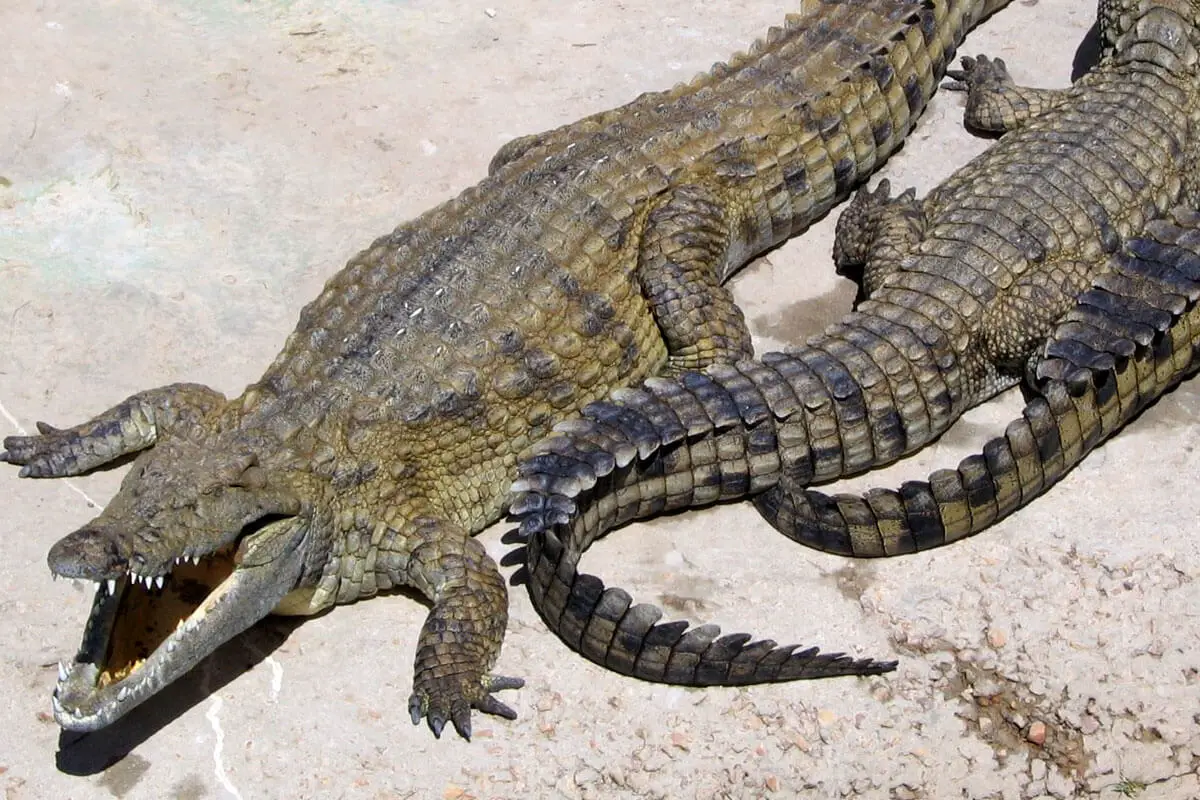
5. Group Of Crocodiles
A group of Nile crocodiles can be referred to as a float, a bask, a nest, or a congregation. Float and bask are the most common way of referring to a group of crocodiles.
When a group of crocodiles is in the water, they are called a float. When the group moves to land, they can be called a bask. This is because, in water, the crocodiles are floating and on land, they are basking.
6. Are Nile Crocodiles Social?
Nile crocodiles are mostly solitary but can be seen in small groups on occasion. They often enclose an area of the water and hold back the fish they are trying to feed on.
Mother crocodiles might form some kind of creche to collectively protect their young ones as a group but adult and independent crocs prefer being alone.
7. How Fast Are African Crocodiles?
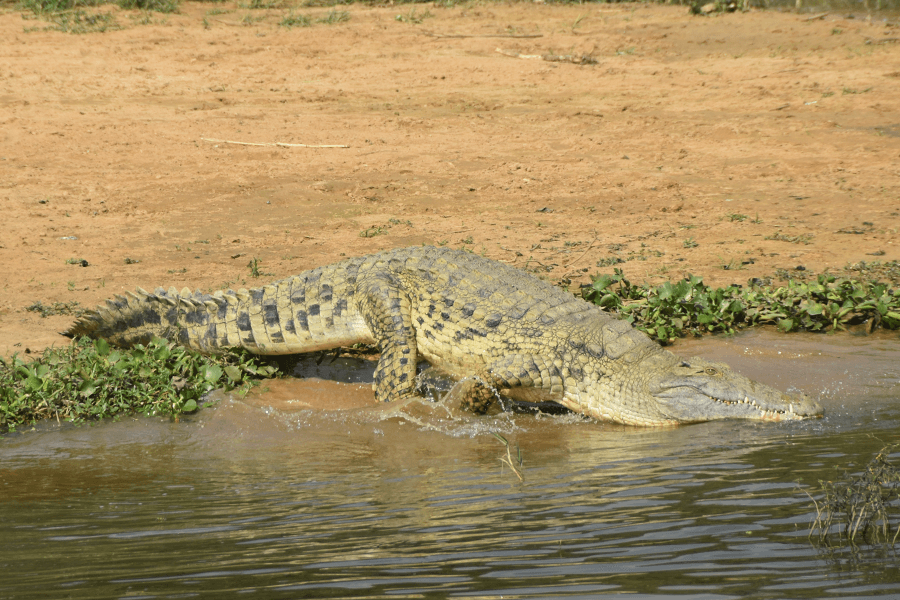
Nile crocodiles are very fast swimmers that can reach speeds of up to 35 kilometres per hour. This makes them the quickest swimmers of all the other crocodile species, and 3 times faster than humans.
On land, crocodiles can reach speeds of around 14 kilometres per hour but for short periods. Whether on land or in water, crocodiles can be faster than a lot of animals - including humans and the best strategy is not to get too close.
8. What Do Crocodiles Eat?
Nile crocodiles are carnivores that feed on many kinds of animals including fish, insects, amphibians, birds, and land mammals such as buffalo or zebras.
As an apex predator, the crocodile is a good hunter and can take down big animals such as zebras, wildebeest, and the occasional hippo's calf.
Young crocodiles often eat insects and small invertebrates since they can manage to hunt those on their own. This ranges from crickets and dragonflies to beetles and more than 100 small animals.
9. How Often Do Crocodiles Eat
Crocodiles have very efficient digestive systems and feed very few times a year. A crocodile often eats about half of its weight in food and slowly digests that over several weeks.
It is even believed that a crocodile could easily survive for years without any meal, but this is hard to prove.
In situations where the crocodiles are eating smaller prey like fish and birds, they will need to eat a bit more often than when they hunt a bigger animal.
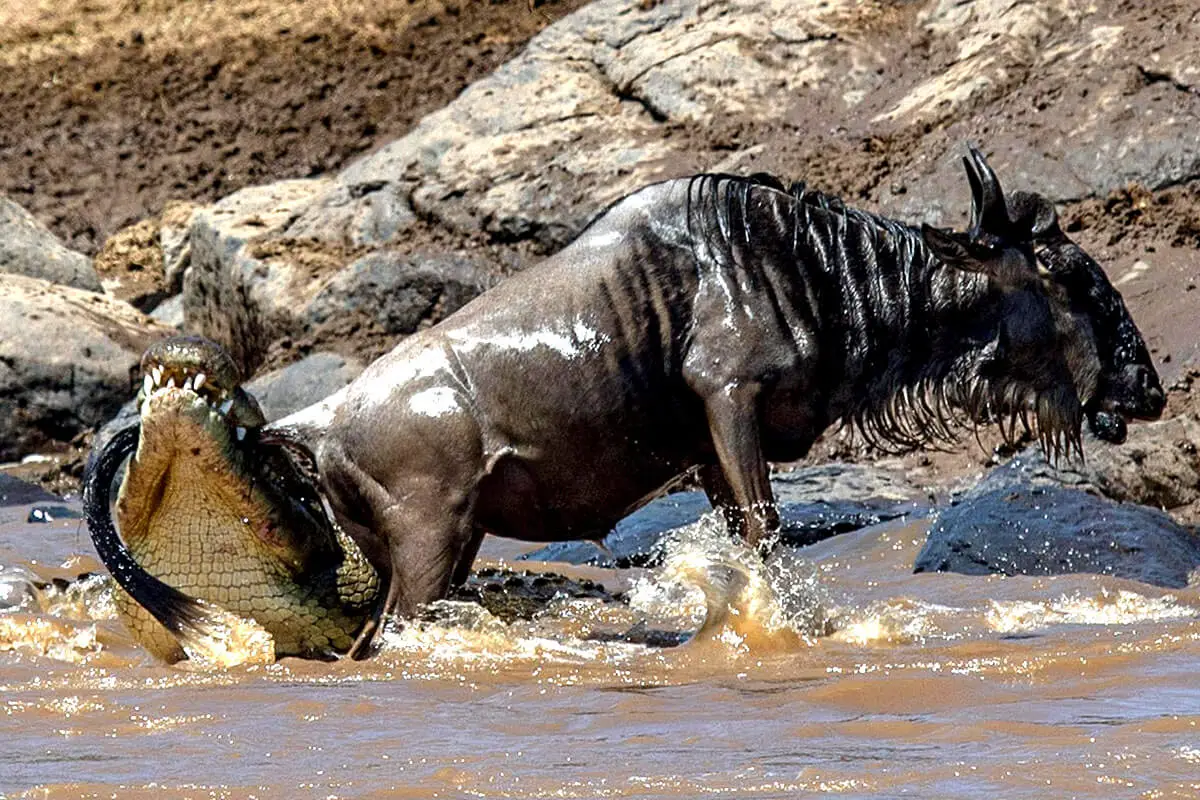
10. How Dangerous Is A Nile Crocodile
Nile crocodiles are the largest freshwater predators in Africa. With the strongest bite force in Africa, a Nile crocodile can easily kill a lion, zebra, wildebeest, or even a cape buffalo.
Nile crocodiles are apex predators, which means that they are at the top of the food chain in their habitat.
These African crocodiles are often seen snapping up some zebras, gazelles, and wildebeest that are crossing the river during the great migration between the Serengeti and the Masai Mara.
11. How Many Teeth Does A Nile Crocodile Have
Nile crocodiles have between 64 to 68 sharp cone-shaped teeth. The African crocodile's teeth are continually replaced over time as the crocodile grows old.
The teeth of an African crocodile are not very long but very sharp and it is hard to escape the grip.
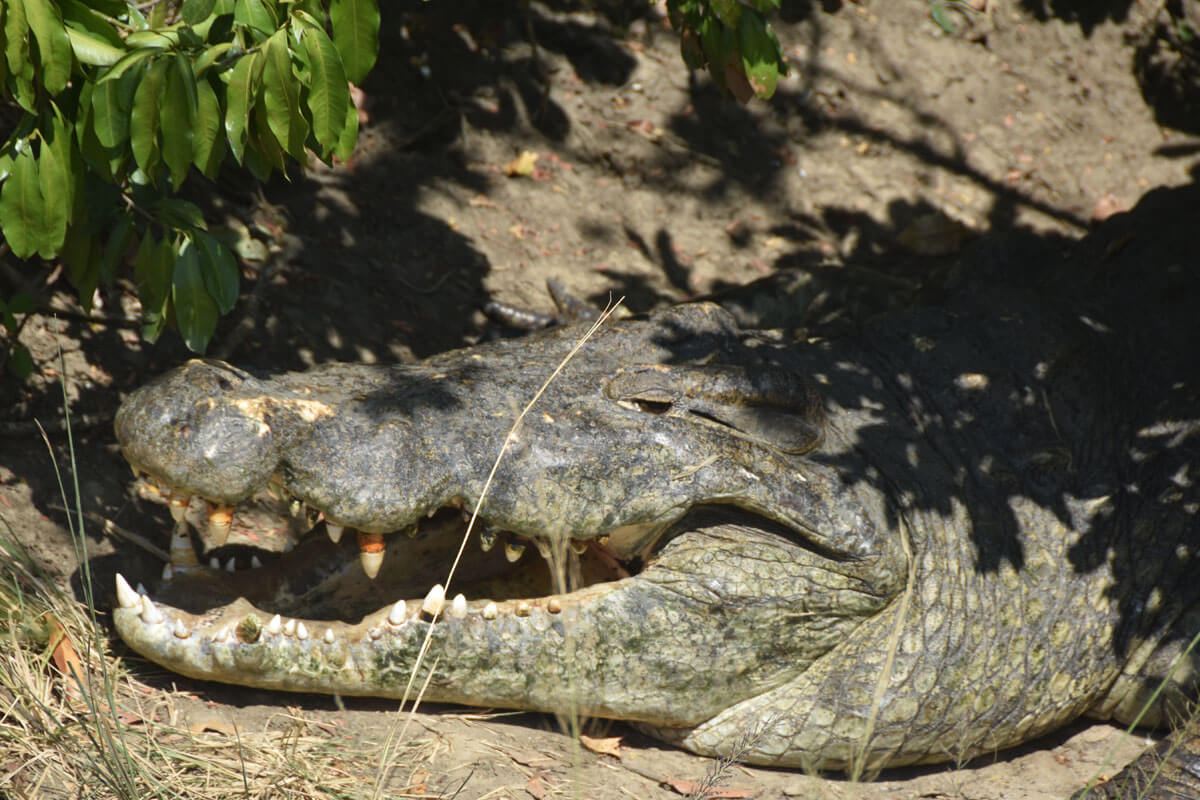
12. How Hard Does A Nile Crocodile Bite?
Nile crocodiles are known for their powerful jaws and sharp teeth and are capable of delivering a bite with a force of about 2,000 pounds per square inch (psi). This is one of the strongest bites of any animal in the world and is powerful enough to easily crush bones and other hard materials.
However, it's important to note that the actual force of a Nile crocodile's bite can vary depending on factors such as the size and age of the animal, the type of prey it is attacking, and the angle at which the bite is delivered.
Very big Nile crocodiles have been measured to have a bite force that can reach 5,000 pounds per square inch (psi). At 5000 PSI, a crocodile bites almost 8 times harder than a lion and almost 3 times more than a hippopotamus.
This is about 70 times more than an adult human can bite. In short, no animal wants to get between the powerful jaws of a Nile crocodile.
Related article: Strongest bite force of African animals
13. Do Crocodiles Attack Humans?
Yes, African crocodiles do attach humans. It is estimated that around 200 people each year die at the jaws of a crocodile, especially in fishing villages.
Their wide range of habitats often means that crocodiles will end up coming in contact with humans. Since crocodiles are indiscriminate carnivores, some villagers often fall prey. This is common where locals use the river as a direct source of water for domestic use.
For your safety, follow the guidelines of the park and marine rangers when told that an area has some crocodiles because you don't want to find them waiting for prey.
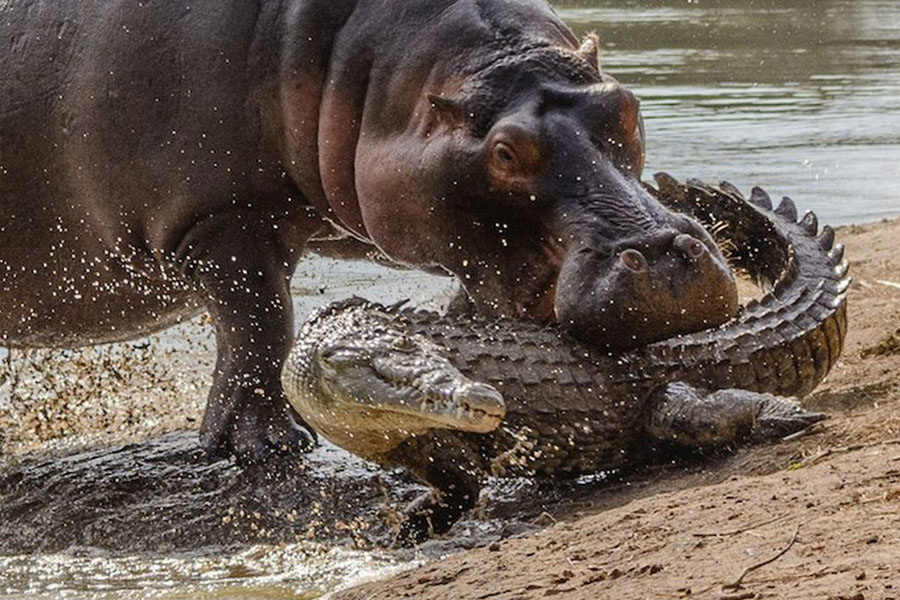
14. How Do Crocodiles Hunt?
African crocodiles are effective hunters that hijack their prey. Whether it is fish, birds, or even the bigger mammals, a crocodile will patiently wait until its target is so close before pouncing on it in one swift move.
When a crocodile grabs its prey, it holds it so tightly and tries to drown it as a means of killing it. In the case of fish, they take it out of the water.
15. Nile Crocodile VS Saltwater Crocodile
The Nile or Common crocodile is different from the saltwater crocodile in many ways but the more noticeable differences are in size and habitat.
Saltwater crocodiles are bigger at an average of 6.5 metres and around 2000 kilograms. Nile crocodiles on the other hand grow to an average of 5 metres and rarely weigh more than 1000 kilograms.
While Nile crocodiles like freshwater habitats and are found in many parts of Africa, saltwater crocs are found in the coastal mangroves, swamps, and deltas from India's eastern coast to Myanmar, Thailand, Philippines, Indonesia, and Australia's northern coast among others.
If a saltwater crocodile were to fight a Nile crocodile, the saltwater crocodile would likely win because of its much bigger size. The factors for these two species of crocodiles to fight are highly unlikely since they live in different and distant geographical habitats.
17. How Do Crocodiles Communicate?
African crocodiles are among the most vocal of reptiles and communicate in various ways. They have a good vocal range and great hearing.
According to a 2007 Harvard study, Young crocodiles start producing sounds while they are still in the egg, and it is likely that their vocalizations gradually change over time as a way of letting the mother know what care is needed.
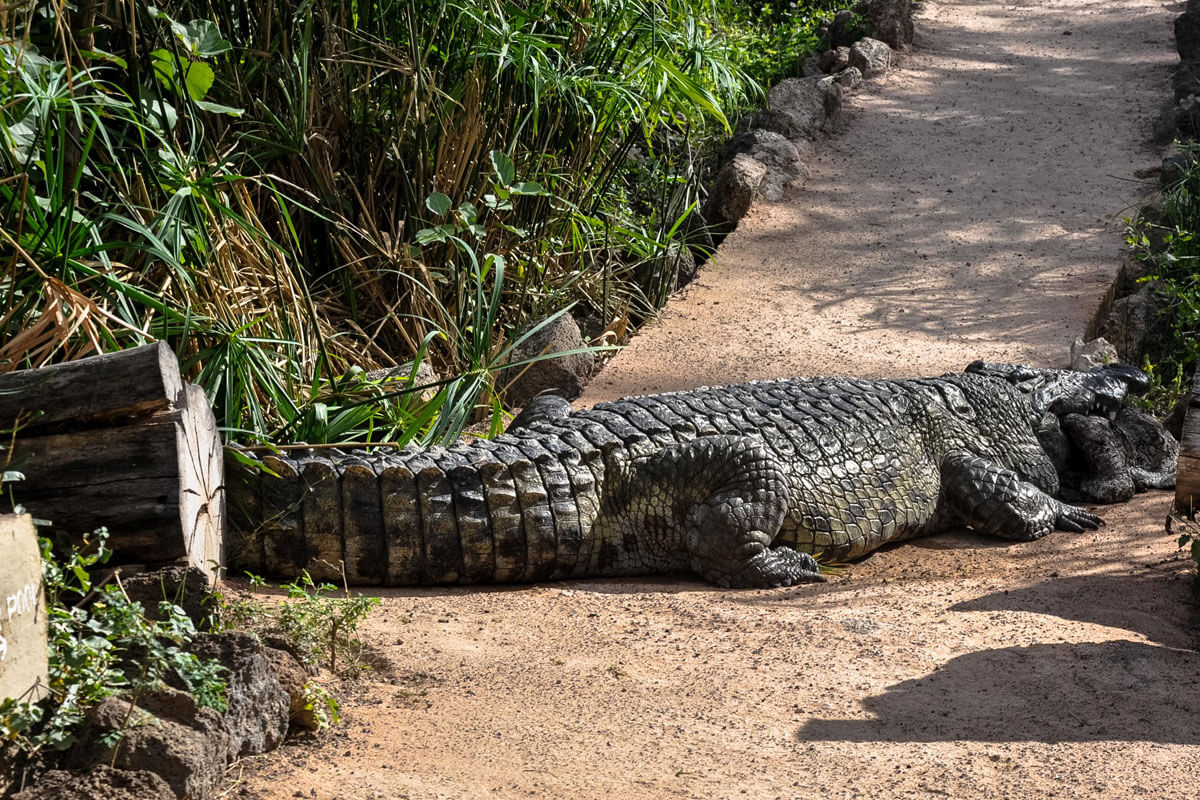
18. How Do Crocodiles Produce?
The mating system of Nile crocodiles is such that one male mates with several females. Female crocodiles lay up to 80 eggs in a hole by the river bank, which acts as the nest.
The eggs are incubated for up to 3 months (90 days) after which they hatch into crocodile hatchlings. Sexual maturity in crocodiles happens between the ages of 12 and 16 years of age.
19. Crocodiles Are Fierce Mothers.
Female crocodiles guard the nest of eggs they have laid from predators until the eggs have hatched. After hatching, the crocodile hatchlings are carried in the mother's mouth to the water.
The mother protects her offspring for around 2 years, and it is not uncommon for mothers to put the young hatchlings in their mouth to protect them.
20. How Long Do Nile Crocodiles Live?
Nile crocodiles live a relatively long life and are thought to be capable of living for more than 80 years. The average lifespan of a Nile crocodile in the wild is around 50 years.
Nile crocodiles in captivity (in zoos and sanctuaries ) can easily live up to 80, or even 90 years.
While crocodiles do live long compared to other animals, they have a high mortality rate and just 10% of the eggs usually reach the hatching stage. And even smaller 1% of hatchlings grow up to be an adult.
From predation, flooding, and other unknown factors, most crocodiles die at a very young stage.
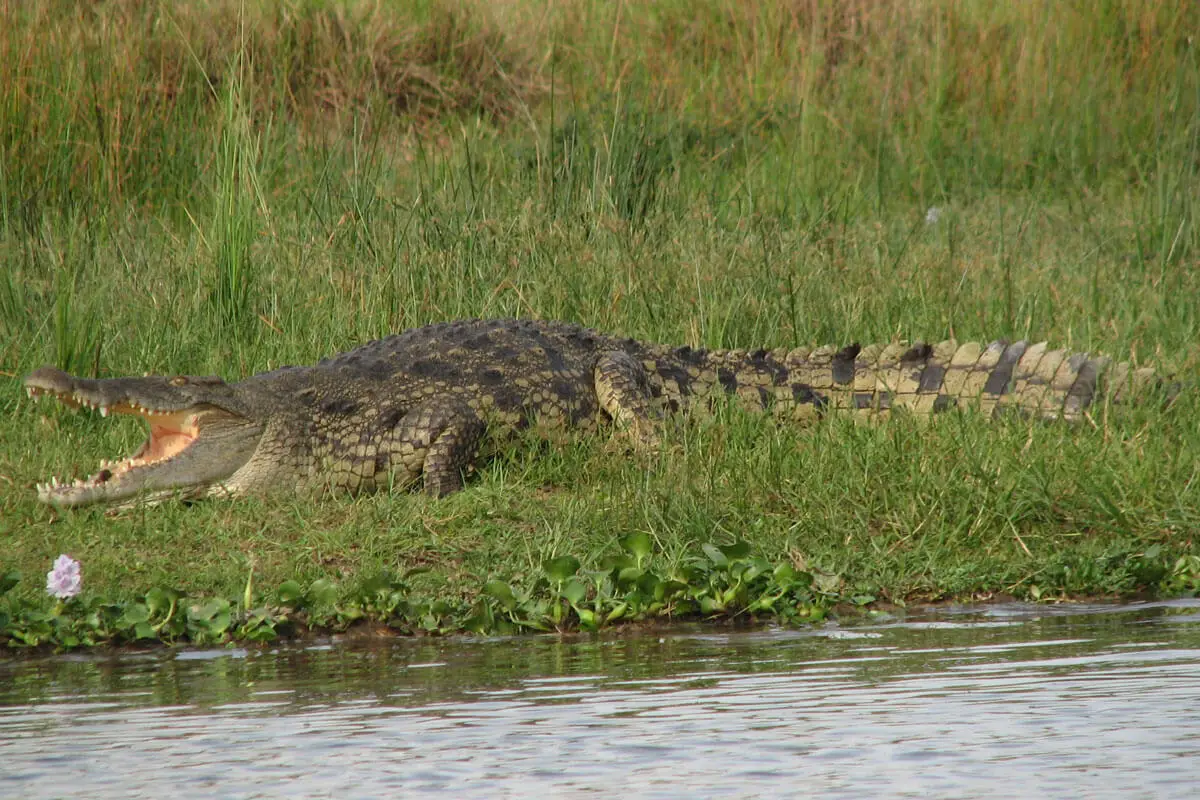
21. How Many African Crocodiles Are In The Wild?
According to the International Union for the Conservation of Nature (IUCN), Nile Crocodiles are classified as LEAST CONCERN and therefore not endangered. This means that the populations and distributions are stable.
As of April 2017, the IUCN estimates a population of around 50,000 to 70,000 mature Nile crocodiles. Some other sources estimate that there are as many as 500,000 Nile crocodiles but we prefer to go with the figures from IUCN.
Final Thoughts
Nile crocodiles are as exciting, as they are dangerous and we hope you learned something interesting. While this article is quite big, it doesn't cover everything and you should feel free to leave us a question.
As you create a mental checklist of African animals to see, you should include a crocodile on there. The danger of these crocodiles is why you might not be allowed to swim in some water bodies.
Related Articles
- Interesting facts to know about the African Rock Python
- Comparing the lifespan of African animals in the wild
- 10 Most beautiful birds to see in Africa
